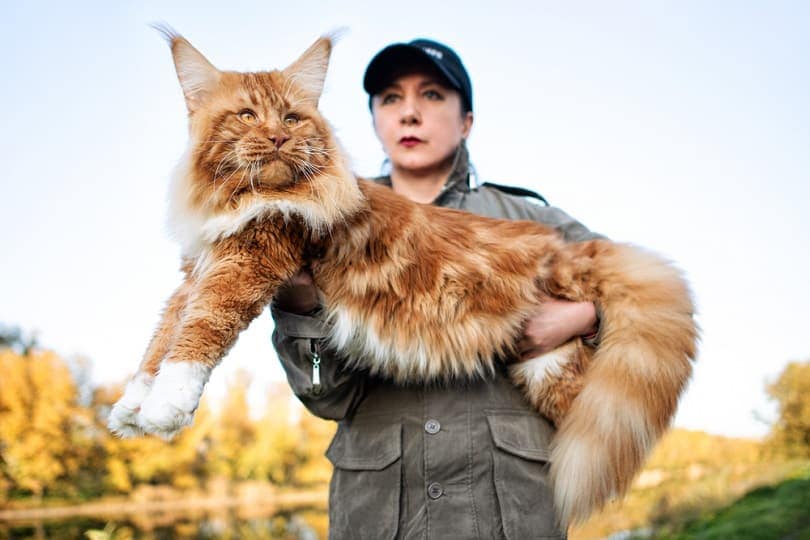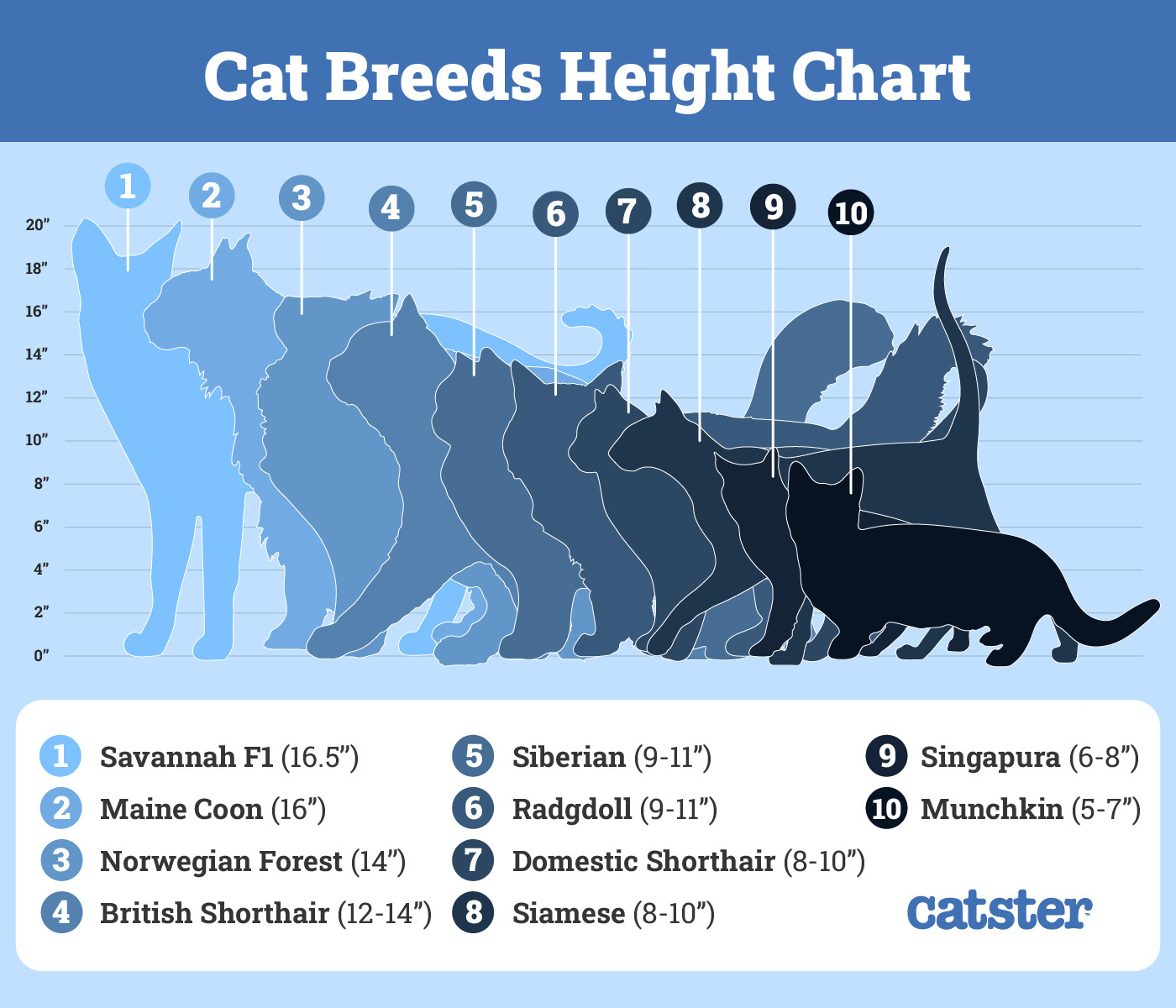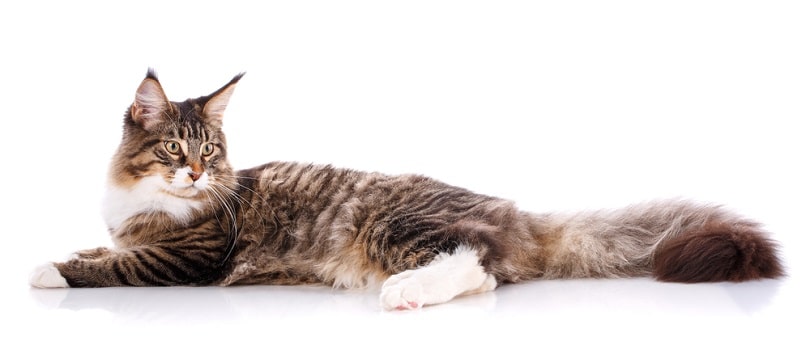Maine Coons are known to be some of the biggest domestic cats there are. The breed originated in the US state Maine, where they had to face brutally cold winters, helping them develop into a rugged breed that’s fit for any cold climate. The longest cat on record is a Maine Coon, which has been a trend for many years. As of 2015, the record is held by a Maine Coon is “Ludo”, who lives in the United Kingdom.
But how big are these gentle giants compared to other house cats? In reality, some Maine Coons are smaller than some other breeds of house cats! But that’s not necessarily the norm. Many of these cats are pretty sizable. So, let’s look at the average Maine Coon cat size, as well as some of the largest cats on record, so we can see how these felines stack up against other fur balls.
Average Maine Coon Cat Weight

Though Maine Coons are known for their above-average size, they’re not always massive cats. Male Maine Coons cats weigh, on average, between 18 to 22 pounds (8.2 to 10 kg) when fully grown. When it comes to females, they’re not as heavy. Female Maine Coons weigh between 12 to 15 pounds (5.4 to 6.8 kg) on average. Some individuals might be heavier, but on average, they tend to fall between these weights.
Maine Coon Cats Height Comparison Chart

Maine Coons are heavy and considerably long, however, they aren’t the tallest cat breed in terms of their height. Though their height has a great amount of variance (10 – 16 inches), their average height is less than the average height of the Savannah cat, which tends to have a smaller degree of variance in their height (13 – 15 inches), averaging at 14 inches.
Maine Coon Length

Of course, weight isn’t the only metric we can use to compare Coons and other cats. The longest Maine Coon on record was an amazing 48.5 inches from the tip of his nose to the end of his tail. The individual’s name was Stewie; he unfortunately passed away from cancer in 2013.
Maine Coon Cat Size vs Regular House Cats
“Regular” house cats, better known as the Domestic shorthair, are considerably smaller than Maine Coons in just about every aspect of measurement.
| Domestic Shorthair | Maine Coon | |
| Weight: | 6.5 – 12 pounds | 18 – 22 pounds |
| Height: | 10 – 12 inches | 10 – 16 inches |
| Length: | 15 – 25 inches | 19 – 40 inches |
The length of the tail is highly variable in Domestic shorthair cats. Therefore, it’s fair to say that they’re often dwarfed by Maine Coons and other breeds in terms of size. However, they are often taller and longer than some other purebred cats.
Just How Big Do Maine Coon Cats Get?
So how big do Maine Coon cats get? You can expect male Maine Coons (at a healthy size) to be impressively large, and even the females would often be much larger than many other breeds of cats. Overall, if you have a Maine Coon cat, it’s safe to say that regardless of their sex and genetics, you’ve got yourself a large pet cat.
Conclusion
There’s a reason why almost every Guinness World Record Holder for the world’s longest cat has been a Maine Coon. They are seriously sizable creatures and one of the largest breeds of domestic cats in the world. But they’re known as the gentle giants of the cat world because of their incredibly loving nature. These cats have a very loveable personality, which is why so many people are endeared to them.
You might also be interested in:
Featured Image Credit: Sergey Ginak, Shutterstock













